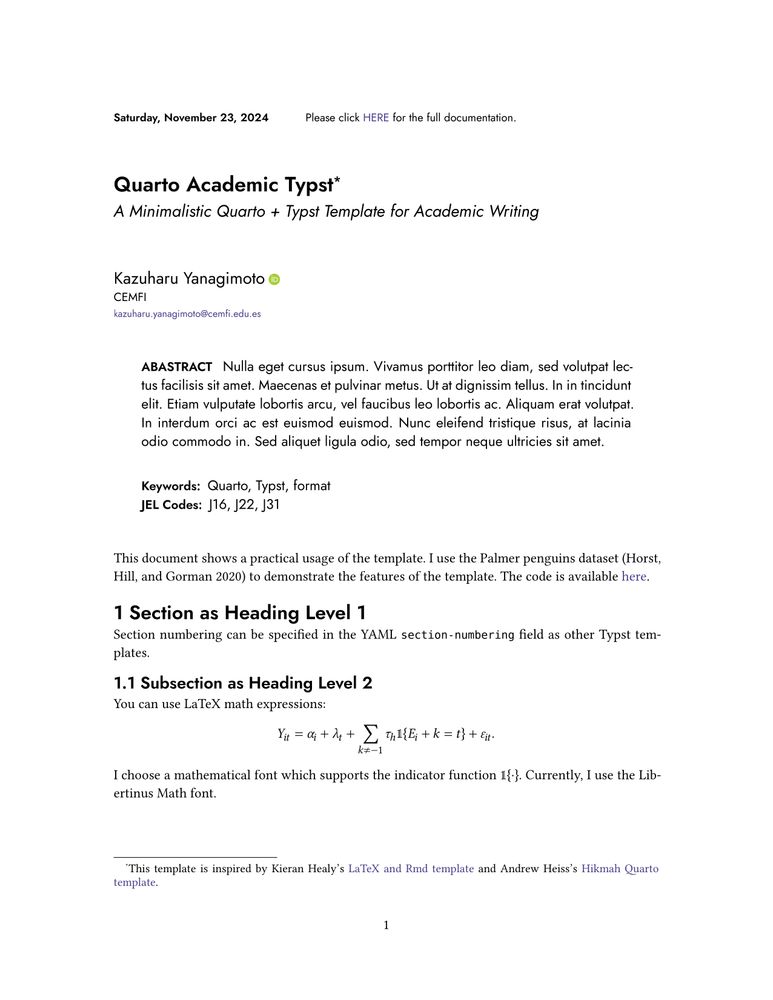
How do #earning differences between organizations affect the provision of employer-led #training? Christian Pfeifer
@leuphana.bsky.social shows that firms with larger intra-firm #wage compression are more likely to cover all direct and indirect training #costs.
doi.org/10.1177/0019...
27.08.2025 22:41 — 👍 2 🔁 1 💬 0 📌 0

V good, v interesting & open access. An excellent combination.
www.cambridge.org/core/journal...
21.08.2025 17:17 — 👍 19 🔁 7 💬 3 📌 2
Voice AI in Firms: A Natural Field Experiment on Automated Job Interviews
We study the impact of replacing human recruiters with AI voice agents to conduct job interviews. Partnering with a recruitment firm, we conducted a natural fie
Great paper by @brianjabarian.bsky.social and @luca-henkel.bsky.social on automated job interviews.
Is AI better at recruiting?
Based on 70.000+ real job interviews:
- 12% more job offers;
- 18% more hires;
- 17% higher retention...
- and 78% of applicants choose AI if given the choice.
20.08.2025 07:26 — 👍 2 🔁 1 💬 0 📌 0
If your organization is in a field that derives value from research & analysis of ambiguous data (law, consulting, many aspects of finance), you need to be benchmarking Deep Research & future AI agents
They may or may not be good enough today, but you need to map the trajectory as advances continue
08.02.2025 15:47 — 👍 93 🔁 8 💬 2 📌 2

1/ 🤔 Ever wondered if pairing socially isolated students with popular peers helps or hurts their outcomes?
My job market paper explores this through a large-scale RCT across Indian schools.
Thread below 🧵
#EconSky #EconJobMarket #JMP
27.11.2024 01:44 — 👍 80 🔁 20 💬 5 📌 5
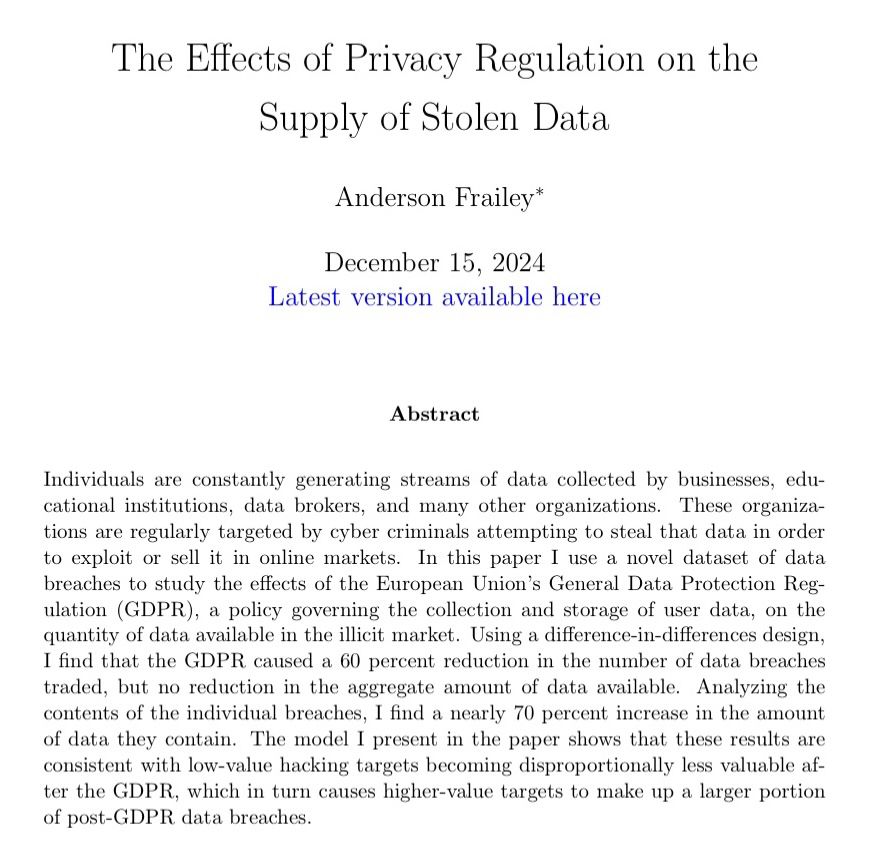
Hi, #EconSky! I’m Anderson, a 6th year PhD candidate at the University of Virginia. For those going to ASSA this week, I’ll be presenting my job market paper, The Effects of Privacy Regulation on the Supply of Stolen Data, during the CSMGEP session tomorrow at 8AM. Here’s a short thread about it
02.01.2025 16:56 — 👍 90 🔁 23 💬 9 📌 4
I wonder if there was any mirror trend of male role models in media becoming more open minded
10.02.2025 13:59 — 👍 0 🔁 0 💬 0 📌 0
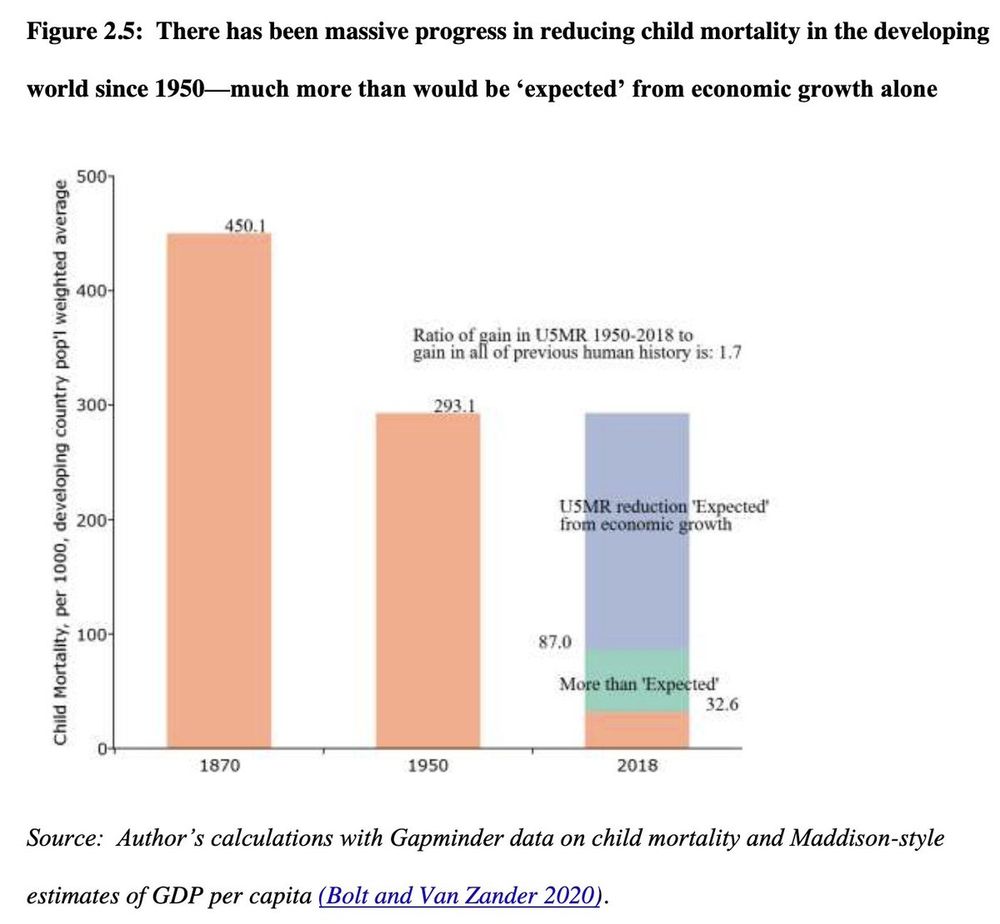
Lant Pritchett has a fantastic new paper on whether aid has helped.
He notes that there has been a massive reduction in infant mortality,
More than would be expected from growth alone.
One possible explanation is aid
Now being cut.
10.02.2025 08:44 — 👍 53 🔁 19 💬 1 📌 0
Americans overwhelmingly endorse gender equality.
The feminist revolution succeeded!
Partly because women's magazines and mainstream television made new ideas appealing and relatable for ordinary women
I love this paper!! 👇
10.02.2025 13:01 — 👍 21 🔁 7 💬 3 📌 2
Here are the first five sets of slides:
01 Introduction: psantanna.com/DiD/01_Intro...
02 Classical 2x2 setup: psantanna.com/DiD/02_two_b...
03 Clustering issues: psantanna.com/DiD/03_Clust...
04 Functional form: psantanna.com/DiD/04_Funct...
05 Covariates: psantanna.com/DiD/05_Covar...
30.12.2024 05:19 — 👍 736 🔁 181 💬 52 📌 15
this abstract is INSANE
28.12.2024 13:04 — 👍 335 🔁 61 💬 20 📌 12
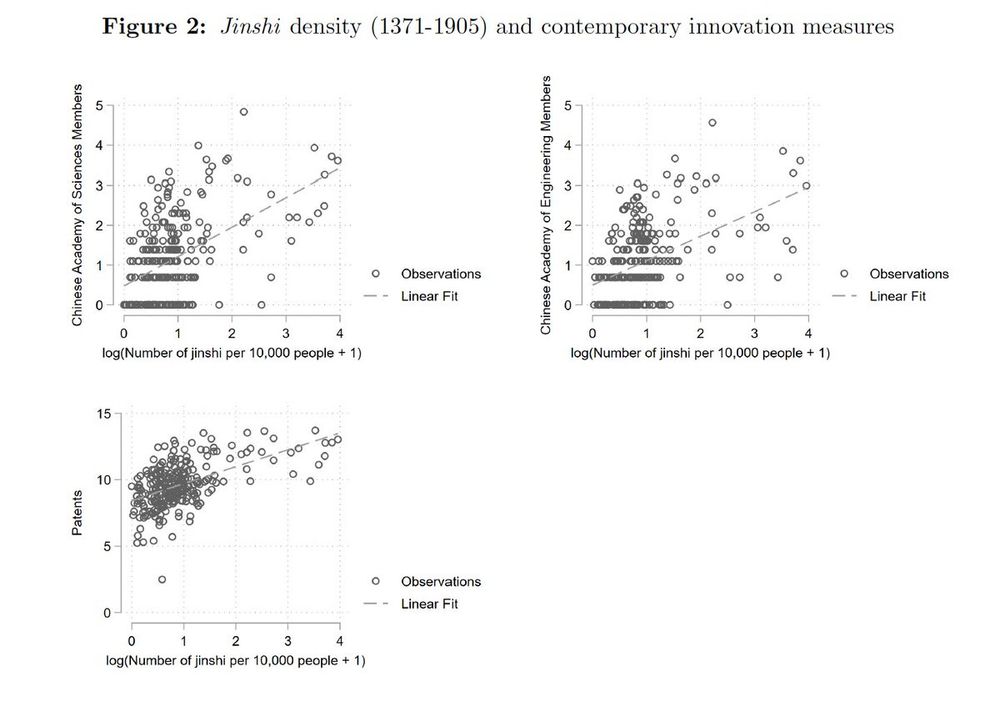
Did East Asia's imperial examinations help or hinder innovation?
Yasheng Huang suggests they instilled rote learning.
But Chenxi Tang's JMP shows that Chinese regions that produced more top scholars (jinshi) in exams 1371-1905 are now more today - 92% more patents!
github.com/chenxit2/JM_...
01.12.2024 08:32 — 👍 14 🔁 3 💬 1 📌 0

From viewers to voters: Tracing Fox News’ impact on American democracy
This paper provides a comprehensive assessment of the effect of Fox News Channel (FNC) on the mass public’s political preferences and voting behavior …
📢 In a newly published paper, Elliott Ash, Sergio Galletta (@sergallett.bsky.social), Matteo Pinna, and Christopher Warshaw explore the impact of Fox News Channel (FNC) on public opinion and American elections from 2000 to 2020. #EconSky @jpube.bsky.social
1/4
www.sciencedirect.com/science/arti...
30.11.2024 15:45 — 👍 40 🔁 17 💬 1 📌 1
Did the market for kidneys get thicker
27.11.2024 15:59 — 👍 1 🔁 0 💬 0 📌 0

We still have a relatively poor understanding of the relationship between evidence and policy. Program evaluation in particular is often motivated by a desire to make policy better. But how effective is program evaluation itself?Michelle Rao's JMP tackles this question. www.michellerao.com/research
27.11.2024 05:42 — 👍 458 🔁 152 💬 29 📌 52
Maybe there can be a dedicated instance/server that has verified accounts only and if the account is on that server then it gets a checkmark
25.11.2024 18:47 — 👍 1 🔁 1 💬 0 📌 0
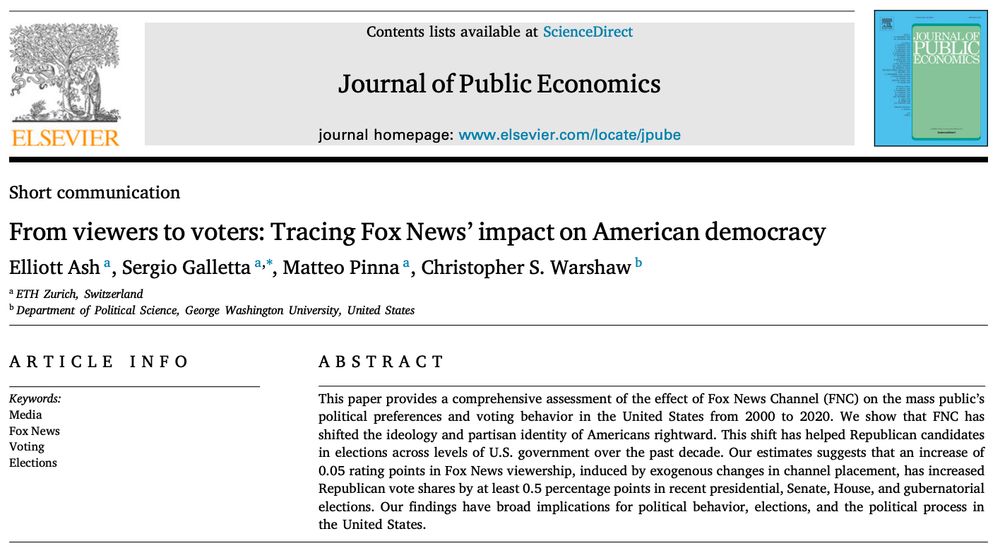
Just published in Journal of Public Economics:
"From viewers to voters: Tracing Fox News’ impact on American democracy"
By @elliottash.bsky.social, Sergio Galletta, Matteo Pinna, & Christopher S. Warshaw.
www.sciencedirect.com/science/arti...
24.11.2024 17:01 — 👍 95 🔁 42 💬 4 📌 5

I'm on the job market! My #EconJMP examines climate adaptation inequality in labor markets (see ⬇️).
This is part of my research on the effects of climate change/plastic pollution on workers & society - often with unique data & an interdisciplinary lens.
Learn more: https://pappanna.github.io/
21.11.2024 13:00 — 👍 80 🔁 27 💬 3 📌 3

I'm on the job market! My #EconJMP provides novel experimental evidence on the importance of addressing asymmetric information before scaling behavioral change interventions.
This is part of my research on human capital investments and evidence-based policymaking: www.guglielmobriscese.com
21.11.2024 18:20 — 👍 26 🔁 8 💬 1 📌 0

Euro Area’s energy price caps in 2022 avoided crises for capped countries but caused inflation spillovers to uncapped ones (+10pp energy, +0.5pp headline). Non-distorting transfers are better for aiding the poor. Cooperation > caps! #EnergyCrisis Momo is on the JM! www.mkomatsu.com
23.11.2024 11:44 — 👍 10 🔁 4 💬 2 📌 1

🇧🇷’s cash transfer program (Bolsa Família) boosts women's labor force participation by 7.6% over 2 years, especially for mothers. No effect on men. Cash transfers + education funding can support both immediate poverty relief and long-term economic engagement! Gabriel’s on the JM! gleitemariante.com
22.11.2024 11:08 — 👍 31 🔁 7 💬 2 📌 1

Homebuyer subsidies for low-income families boost kids' education outcomes! Children in families that got housing support had better grades, test scores & college attendance. Stable housing + less crowded homes = better future for vulnerable kids 📚🏠 evidence from Chile! shorturl.at/KJtl4
21.11.2024 20:35 — 👍 26 🔁 3 💬 1 📌 0

🌟 First post on Bluesky! 🌟
I’m on the 2024/2025 #EconJobMarket! 🚨
My job market paper explores how the Army’s 1972 gender desegregation catalyzed women’s entry into male-dominated civilian occupations.
A thread on the findings and contributions 👇(1/11)
23.11.2024 19:10 — 👍 29 🔁 7 💬 1 📌 4
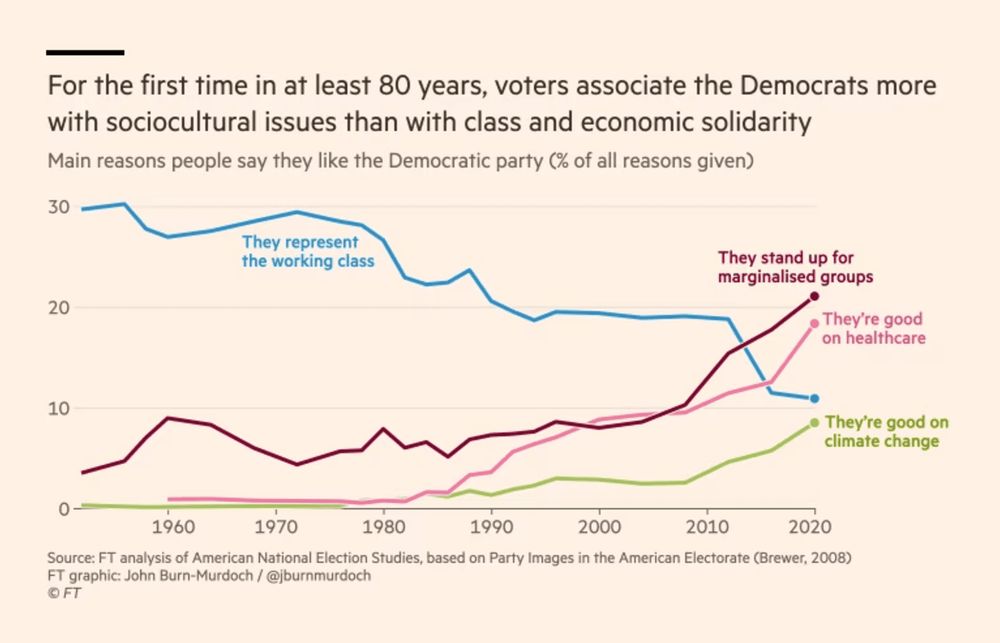
Trying something new:
A 🧵 on a topic I find many students struggle with: "why do their 📊 look more professional than my 📊?"
It's *lots* of tiny decisions that aren't the defaults in many libraries, so let's break down 1 simple graph by @jburnmurdoch.bsky.social
🔗 www.ft.com/content/73a1...
20.11.2024 17:02 — 👍 1592 🔁 463 💬 92 📌 96
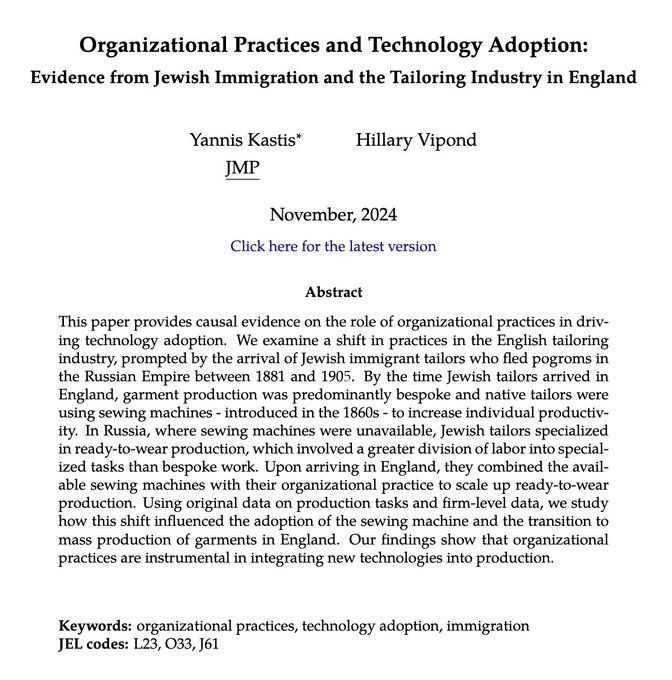
JMP by Yannis Kastis with @hillaryvipond.bsky.social
It's both an immigration paper & an adoption-of-technology paper. I didn’t know this: immigration of Jewish tailors from the Pale was very important in the rise of mass garment production in Victorian England
jkastis.github.io/yanniskastis...
22.11.2024 14:32 — 👍 59 🔁 14 💬 2 📌 4
Following up on early investments? Let me tell you about one of my papers on exactly this: We study a large government trial in the 1960s with preventive toddler care. Copenhagen assigned 10% of toddlers to universal nurse home visits not only in the first year (default) but also in year 2 and 3.
22.11.2024 07:36 — 👍 19 🔁 8 💬 1 📌 0
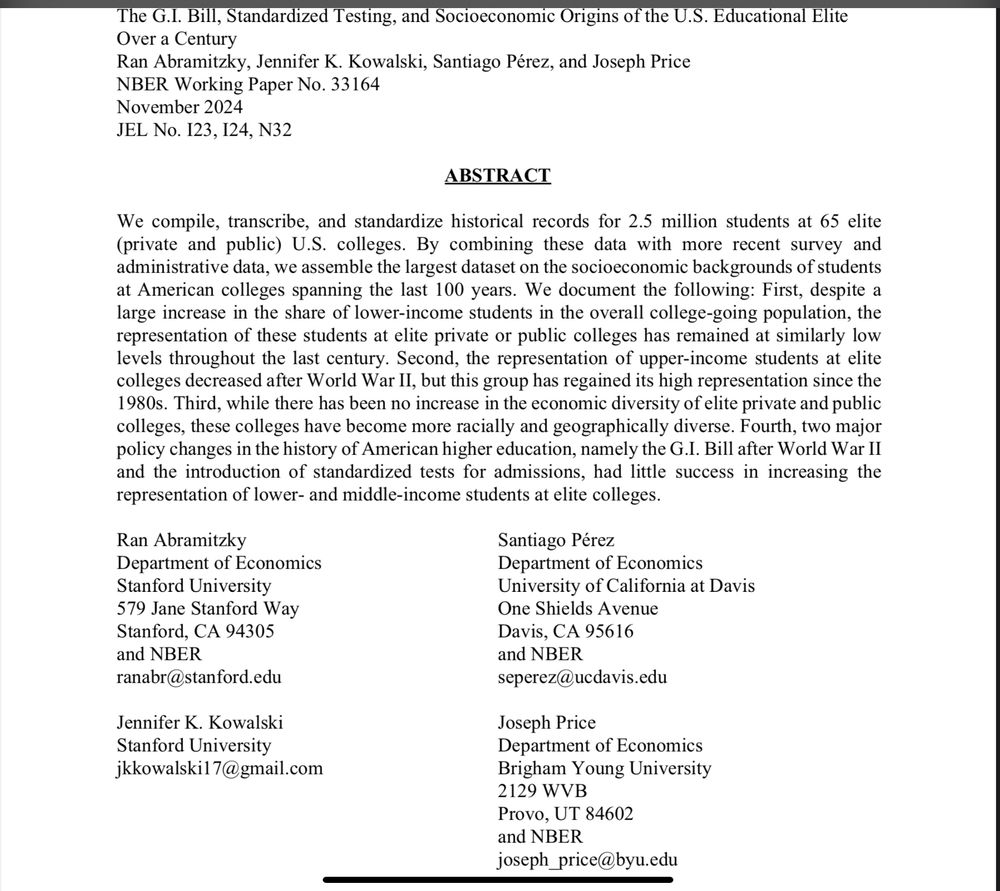
The G.I. Bill, Standardized Testing, and Socioeconomic Origins of the U.S. Educational Elite Over a Century
Ran Abramitzky, Jennifer K. Kowalski, Santiago Pérez, and Joseph Price
NBER Working Paper No. 33164
November 2024
JEL No. 123, 124, N32
ABSTRACT
We compile, transcribe, and standardize historical records for 2.5 million students at 65 elite (private and public) U.S. colleges. By combining these data with more recent survey and administrative data, we assemble the largest dataset on the socioeconomic backgrounds of students at American colleges spanning the last 100 years. We document the following: First, despite a large increase in the share of lower-income students in the overall college-going population, the representation of these students at elite private or public colleges has remained at similarly low levels throughout the last century. Second, the representation of upper-income students at elite colleges decreased after World War II, but this group has regained its high representation since the 1980s. Third, while there has been no increase in the economic diversity of elite private and public colleges, these colleges have become more racially and geographically diverse. Fourth, two major policy changes in the history of American higher education, namely the G.I. Bill after World War II and the introduction of standardized tests for admissions, had little success in increasing the representation of lower- and middle-income students at elite colleges.
Holy crap this is an astounding piece of historical research
Will post ungated link later today unless someone beats me to it
www.nber.org/system/files...
18.11.2024 12:47 — 👍 1386 🔁 469 💬 66 📌 75
Hier postet die Social-Media-Redaktion der Abteilung Universitätskommunikation der Leuphana Universität Lüneburg.
Leuphana News: www.leuphana.de/news
Leuphana Impressum: www.leuphana.de/impressum
Leuphana Datenschutz: www.leuphana.de/datenschutz
Editor and CEO, Zeteo
Author, ‘Win Every Argument’
British-American
Mayor-Elect of New York City
Political economist @ LSE | Finance, central banking & more | benjaminbraun.org
The frontier of economics research, in stick figures.
Subscribe at http://youtube.com/econimate
Professor at the Middlebury Institute, member of the National Academies Committee on International Security and Arms Control, and former member of the State Department's International Security Advisory Board.
Pushing the frontiers of current research and striving for excellence in education. Welcome at the Department of Economics at LMU Munich
https://www.econ.lmu.de/en/index.html
PhD student at Paris School of Economics.
International Political Economy, Geoeconomics, Globalization and Inequality.
National Accounts coordinator WIL
gastonnievas.com
Illuminating the debate through data-driven research #inequalitydata✨
Hosting the World Inequality Database🌐 https://wid.world/
https://inequalitylab.world/en/
Professor at EHESS & PSE
Co-Director, World Inequality Lab
inequalitylab.world | WID.world
http://piketty.pse.ens.fr/
Economist. Part time farmer. Amateur boxer. Occasional author. Egotist. Advocate of economics without jargon. Inflation, environmental economics, the economics of prejudice, structural change.
ubs.com/pauldonovan
Writer (on science, travel & curiosity), Yorkshireman, tedious enthusiast, professional overthinker, Megathreader. Now: Scotland.
Writes Everything Is Amazing: https://everythingisamazing.substack.com/
Chartbook Substack https://adamtooze.substack.com/
OnesandTooze podcast https://foreignpolicy.com/podcasts/ones-and-tooze/
C******* University historian, Director European Institute, Chair Cttee on Global Thought.
Economics, history, theory, politi
Dad, husband, President, citizen. barackobama.com
Professor of Climate Policy, Hertie School Centre for Sustainability
Not for profit organization founded by the R Core Team to provide support for the R project. A reference point for interaction with the R development community.
A network of London-based scholars interested in socio-economic inequality. Sign up and join our events: http://london-inequality-network.co.uk
Coordinated by @cmtneztt.bsky.social, @marcoranaldi.bsky.social, @zparolin.bsky.social and @yonatanberman.com
Assistant Professor, Economics, University of Exeter. Political Economy, Labor Economics, Migration, Gender. PhD from Paris School of Economics. 🇫🇷🇨🇭🇺🇾 in 🇬🇧. https://sites.google.com/view/sarah-schneider-strawczynski/accueil









